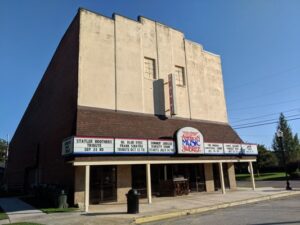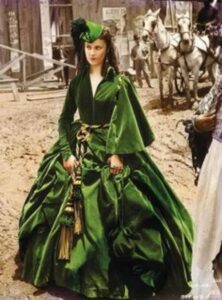1960 Selma, North Carolina
Polly Beaver
Born 1952
Selma, North Carolina
Interviewed February 3rd, 2023
By Alex Deng
The first movie I remember watching was Gone With The Wind. I couldn’t have been more than 8-9 years old (early ‘60s), so the screening I saw must’ve been a rerun–as the local theater would often do with classics like Gone with the Wind.

In my local area, there were two main theaters, both owned by a guy named Rudy Howell. The one in Smithfield was called the Howell theater, and the one in the town I grew up in, the Rudy theater, was the one my family and I would go to and where I saw Gone With The Wind. I don’t remember exactly who I watched it with, but I know that it must’ve been with my family. This was the custom back then. In the small farming community I grew up in–Selma, North Carolina–movies were a real specialty item. After all, while 14 cents a movie might seem like nothing now, it sure was a sizable amount when you’d be lucky to make even 50 cents an hour for your work. Chuck in purchases from the concession stand (soda, popcorn, candy), and that really was a decent chunk of your paycheck. Most didn’t go to the theaters during the week because they needed to work on the farm, and even then, they were mostly reserved for special occasions like birthdays and holidays. More often, people would go to drive-in movies. These were less formal, relatively cheaper, and popular as both a family gathering and teen hangout spot. I remember my brother actually had one of those metal speakers from the drive-ins and would sit on the fence and watch movies for free from a distance.
Since we were in a farming community, we mostly drove to get to the theater. Back then, the main mode of transportation was farm trucks, on which the whole family would pile into the back until we reached the theater. Some families would even come by horse and carriage–just like in the Westerns. Oh yeah, we loved our westerns.
Anyways, back to Gone with the Wind. I think this movie stuck in my memory so well because of how much weight the movie held in the context of my own life. You see, I was a true southern girl, and with the background I came from, I felt like I could identify with and understand everything. Growing up at the time, the relationships between black people and white people seemed normal, and because our relationships were often so intertwined (often like family), we also understood the plight of historical slavery. Because of this background, watching a recounting of Civil War events, like the burning of Atlanta, was internally extremely powerful. There was a lot of cultural and historical understanding and appreciation.
It was the drama of the film. It was its beauty. It was the fact we could feel and see textures and colors. It was that we could identify with the hardships, regardless of who they involved. There were real true-to-life kinds of things: compassion, perseverance, ingenuity, and how to treat and not treat people. It just encompassed so many vital characteristics that I had found important throughout my life. It was a whole different concept compared to today of how you portray life. Today, almost all of it is fictional. Back then, we learned there were real consequences, and that living was a lot more than just our next shopping trip.
Now, beyond the cultural and emotional aspects of the movie, I also remember how moved I was by its pure beauty. Oh man, it was so gorgeous: the velvet curtains that Scarlett O’Hara would make dresses out of, the way the movie could highlight her face. That was the way we wanted to look, the way we wanted to dress–the dream of being a woman like that. For a girl who’d maybe have one good dress to wear to church each week, that sure was powerful.

Gone with the Wind gave me a vision of beauty, fashion, and poise. There were several women characters in the movie for which I had the reaction of, “I’ll take some of this, and I’ll take some of that”. These were characters that molded my idea of womanhood. And then… there was Clark Gable–so debonair, so handsome–he was someone you never could really get over.
In short, I can truly say that the weight of this movie–its message, its characters, its icons–was everlasting.
Gone With The Wind is just one representation of what I miss about the movies of that time. Movies back then focused on telling stories and conveying morals through those stories. They were created to promote Americanism as it used to be–ingenuity, perseverance, and uprightness. They weren’t like most frivolous, fictional movies today–never showed real sex, never focused on violence–and, in my opinion, simply held more weight.
